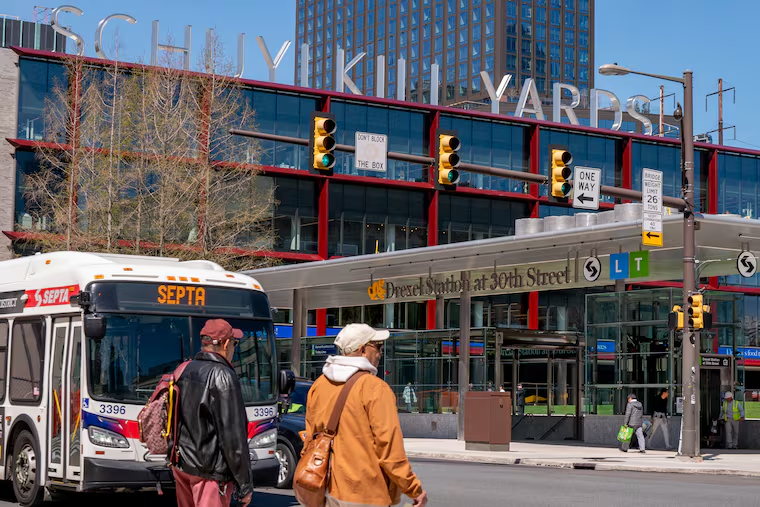SEPTA flips the switch on its website to highlight new ‘Metro’ branding
The goal is to have new directional signs and symbols in place before Philadelphia hosts the World Cup in 2026.

New Metro colors, “badges” and nomenclature appeared prominently on SEPTA’s website Wednesday morning, accelerating implementation of a long-planned transformation of wayfinding signage on the rail transit network.
SEPTA plans a two-year changeover, moving station to station, to communicate name changes to riders, including:
SEPTA Metro: the umbrella term for SEPTA’s subway, elevated, and trolley lines
L: Market-Frankford Line
B: Broad Street Line
T: Subway-surface trolleys
M: Norristown High Speed line
D: Media-Sharon Hill Line
“Once we get those terms in circulation, it gives us the ability to start implementing changes a lot faster than we have been,” said Lex Powers, SEPTA’s director of service information design.
New designations — for example, an L on a blue background for the Market-Frankford elevated — will appear alongside the current branding online to “ease the transition,” Powers said.
The septa.org website draws about 100,000 views daily, or three million a month.
Ultimately, the Broad Street Line subway, the Market-Frankford Line, trolleys in the city and Delaware County, and the Norristown High Speed Line (eventually “M” on a purple background) will be part of the Metro ecosystem.
Already, the new wayfinding symbol system has appeared at the redesigned Drexel Station at 30th Street. It will serve a role similar to that of a model house in a development.
After four years of research and engagement with riders, SEPTA in 2021 announced its master wayfinding plan with the aim of making images easier to see and understand quickly.
Lines will be denoted by capital letters and color badges instead of pictographs of rail vehicles over colored backgrounds. The hues historically associated with them, such as orange for the Broad Street Line, blue for the Market-Frankford Line (the El), and green for trolley routes, will be retained.
The project will include new, less-cluttered maps that show bus connections at stations and “neighborhood maps” to help orient riders as they leave a station. In addition, station names will be adjusted to eliminate duplicates (such as two Girard stations).
SEPTA plans to complete the Broad Street Line first, then move to the Market-Frankford Line, trolley lines and the NHSL, officials said.
Work begins later this year with a redo of the signage at City Hall and 15th Street Stations, the center of the transit system — and the most heavily used.
“Through our research, unsurprisingly, we found that it was the most confusing station to navigate,” Powers said. “So if we can get that right, I think we can show a lot of people the potential of the project.”